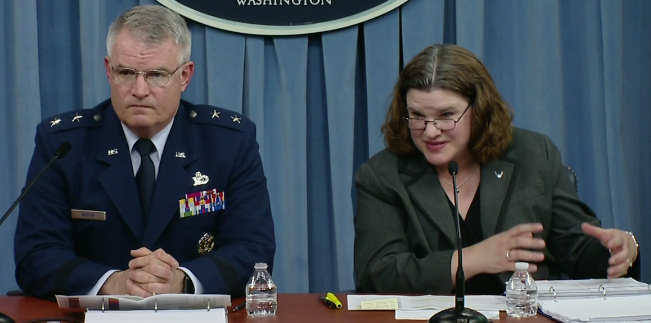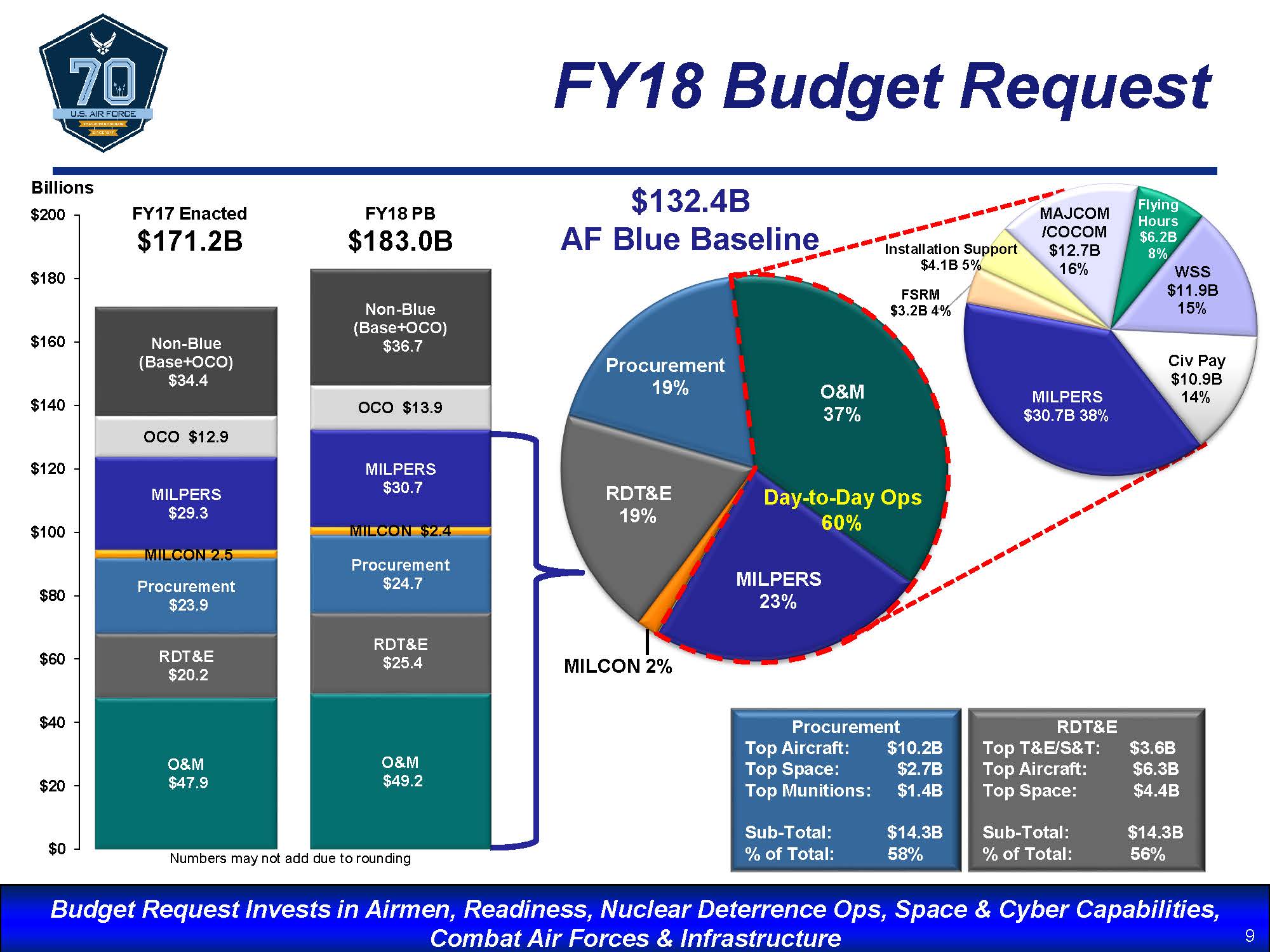
Maj. Gen. James Martin, USAF deputy assistant secretary for budget, and Carolyn Gleason, USAF budget deputy, brief the media on the Air Force's Fiscal 2018 budget request on May 23, 2017. Screenshot photo.
The Air Force’s Fiscal 2018 budget, released on Tuesday, requests $132.4 billion in the baseline “blue budget” and $13.9 billion for overseas contingency operations.
Maj. Gen. Jim Martin, USAF deputy assistant secretary for budget, told reporters the FY18 budget request “continues our emphasis on our readiness recovery, fills critical [capability] gaps, and improves lethality,” by investing “heavily in airmen, readiness, nuclear deterrence operations, space and cyber capabilities, Combat Air Forces, and infrastructure.”
It increases the overall end strength to 502,000—up 4,100 Active Duty members and 1,700 Air Guard and Reserve—with a focus on growing the number of pilots, maintainers, cyber operators, and remotely piloted aircraft operators. The budget funds a 2.1 percent pay raise for uniformed military members and 1.9 percent increase for civilian personnel.
It also funds an additional two training squadrons at Holloman AFB, N.M., as well as additional incentives for pilots in an effort to address the growing pilot shortage.
The budget includes $6.2 billion for 1.2 million flight hours, up slightly from the 1,165,203 requested in Fiscal 2017, though that’s still only 92 percent of what’s required. Martin said increasing flight hours is a “key element to readiness recovery,” noting the number will continue to improve each year as the service brings on more maintainers. “We continue to fund flying hours and weapon system sustainment to what we can execute,” he said.
The Air Force budget sustains F-35A production by procuring 46 aircraft in Fiscal 2018, continues the tanker recapitalization by procuring 15 KC-46A tankers, and funds “bomber fleet modernization to extend the life of the B-52, B-1, and B-2,” according to budget documents. It also maximizes munitions production, investing heavily in preferred munitions, such as the Joint Direct Attack Munitions and Small Diameter Bomb I.
It increases the number of cyber teams from 30 to 39 and invests in both offensive and defensive cyber initiatives that are “needed to defend the nation,” said Martin.
The budget also sustains 60 RPA combat lines and continues the service’s RPA “get-well plan.”

The Fiscal 2018 request contains $2 billion for military construction—slightly less than the Fiscal 2017 request. That includes funding for new mission beddowns for the F-35, KC-46, and Presidential Airlift Recap. It also supports combatant commander top priorities.
The budget funds range recapitalization including an “updated, properly sized Utah Test and Training Range Consolidated Mission Control Center at Hill AFB, Utah, and an addition to the Red Flag facility at Nellis AFB, Nev, that will enable the Air Force to effectively train to employ the full range of capabilities available within our fifth-generation fighter flight,” according to budget documents.
Martin said rebuilding readiness is a long-term effort and he repeatedly emphasized that “in order to be successful” sequestration must be repealed and “stable, predictable funding” provided.
“FY18 is a pivotal year because the Budget Control Act remains in place and sequestration remains the law,” said Martin. That forces USAF to choose “between being ready and capable now, or ready and capable in the future,” he added, saying, “That’s a false choice because we need both to be successful.”